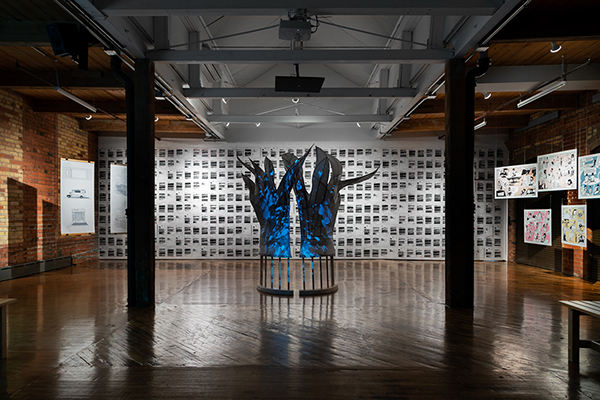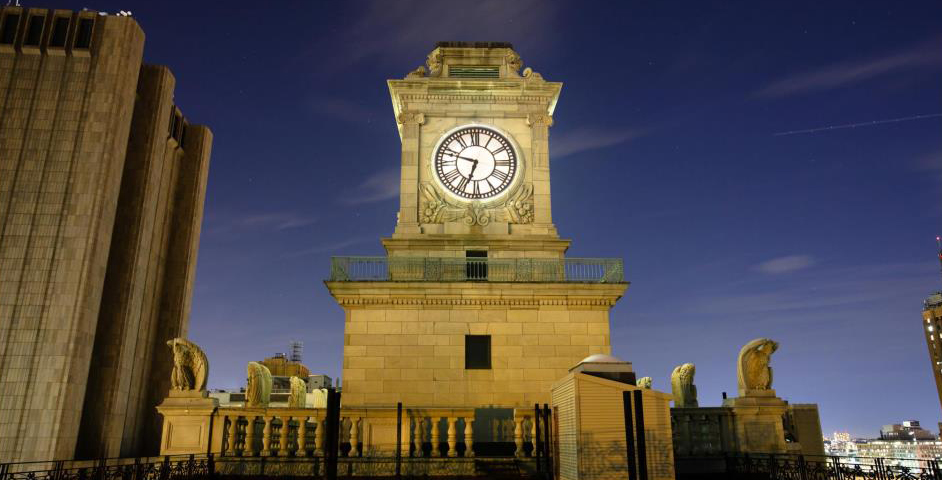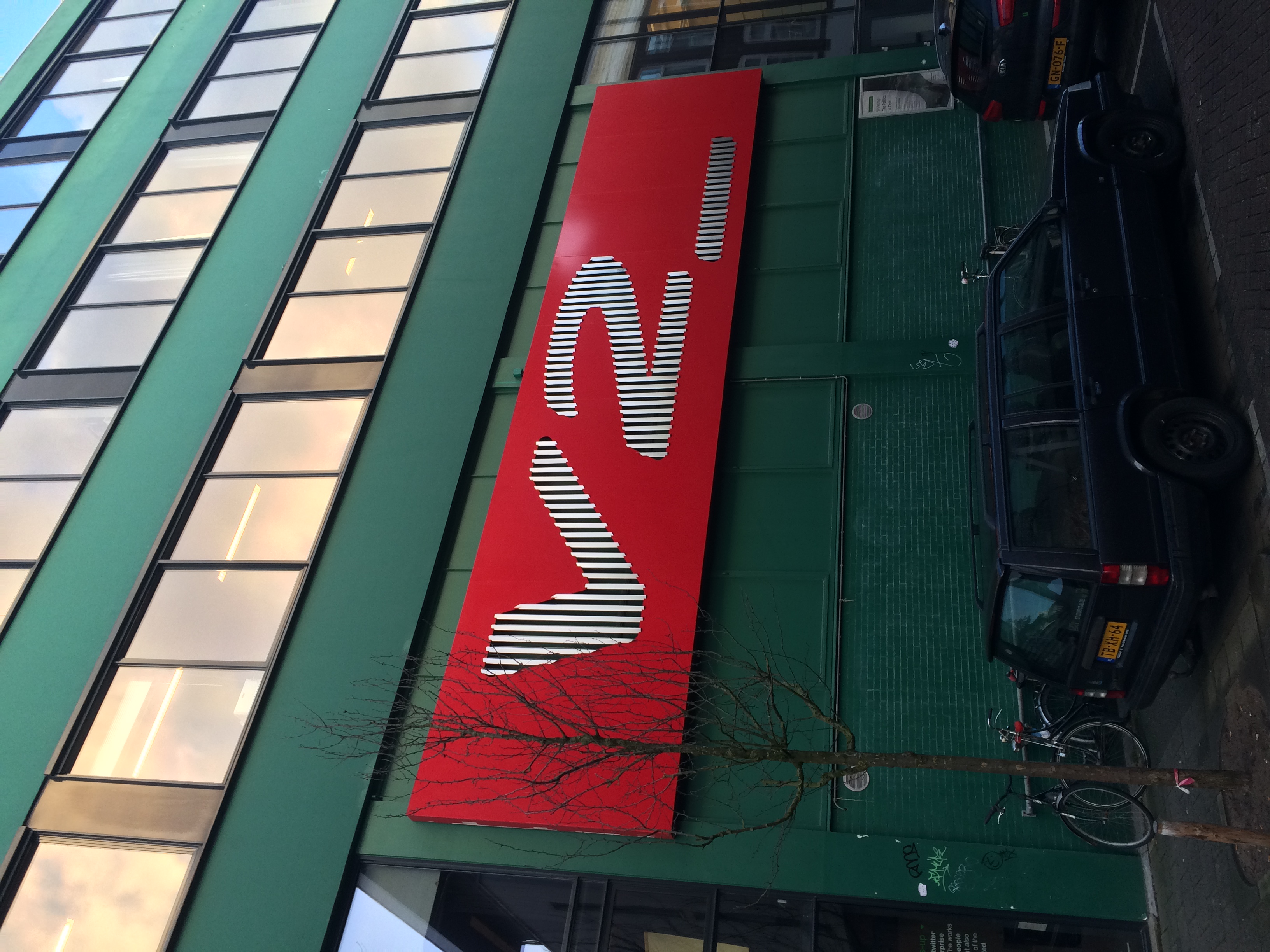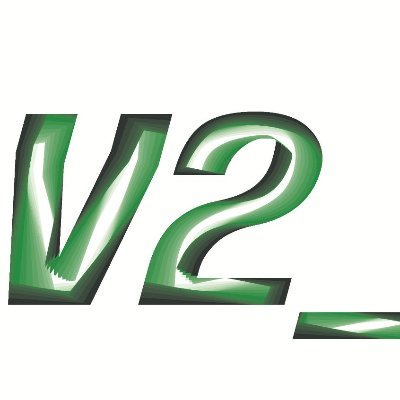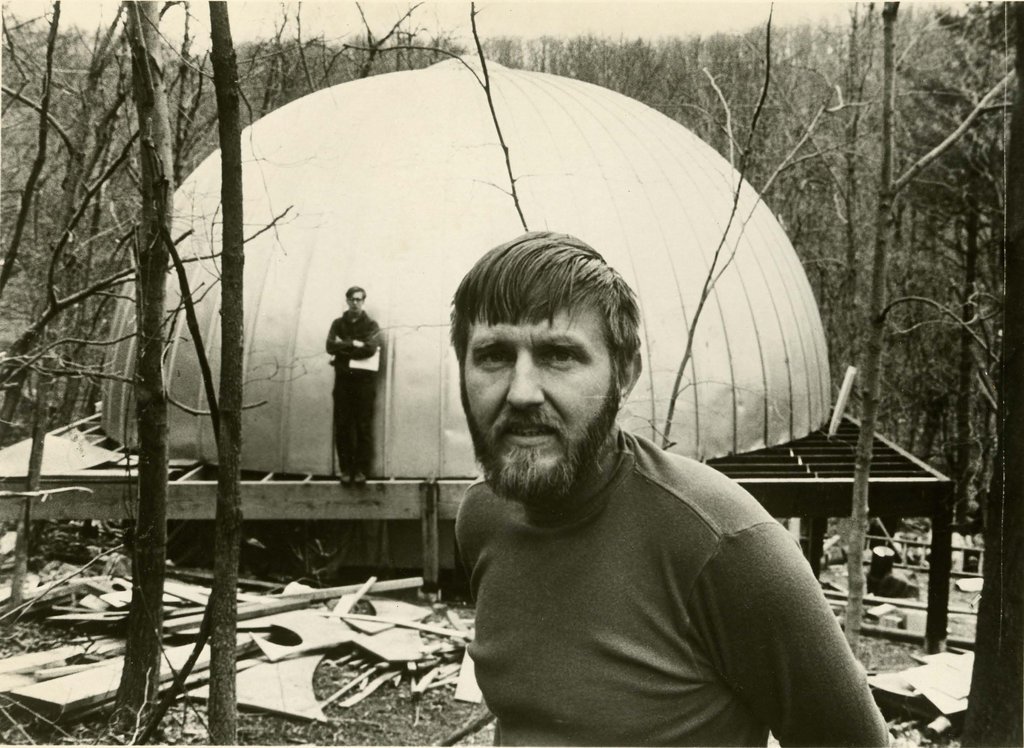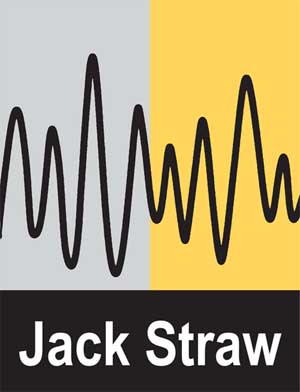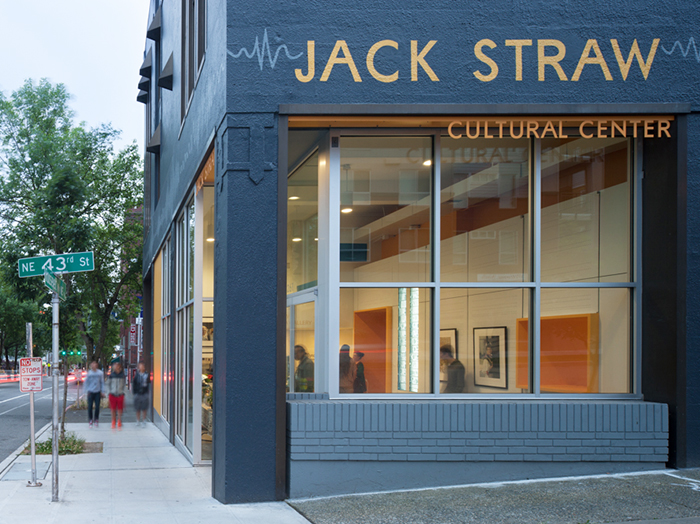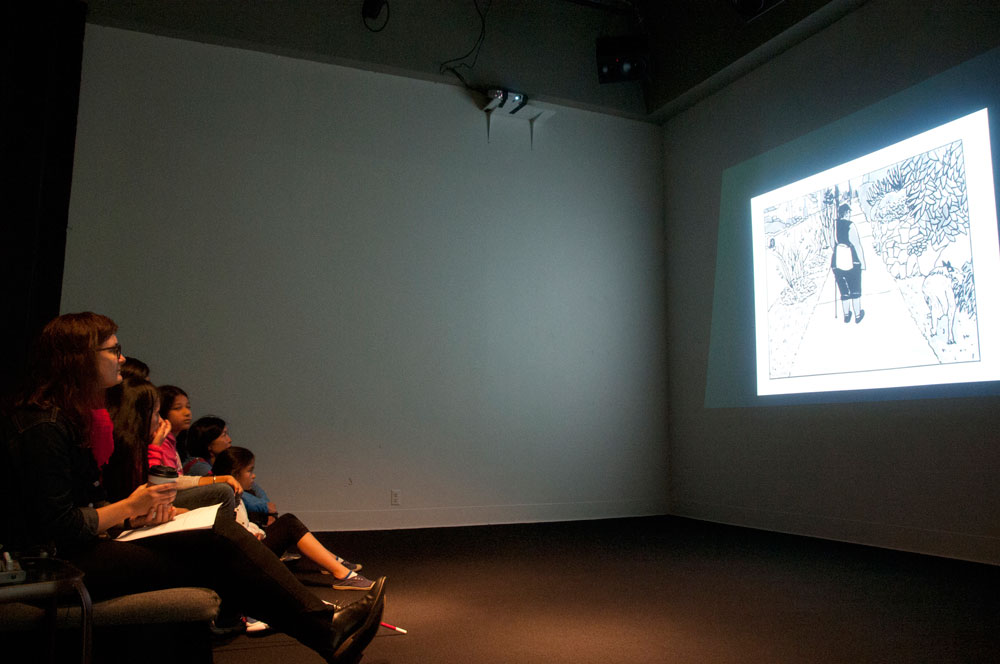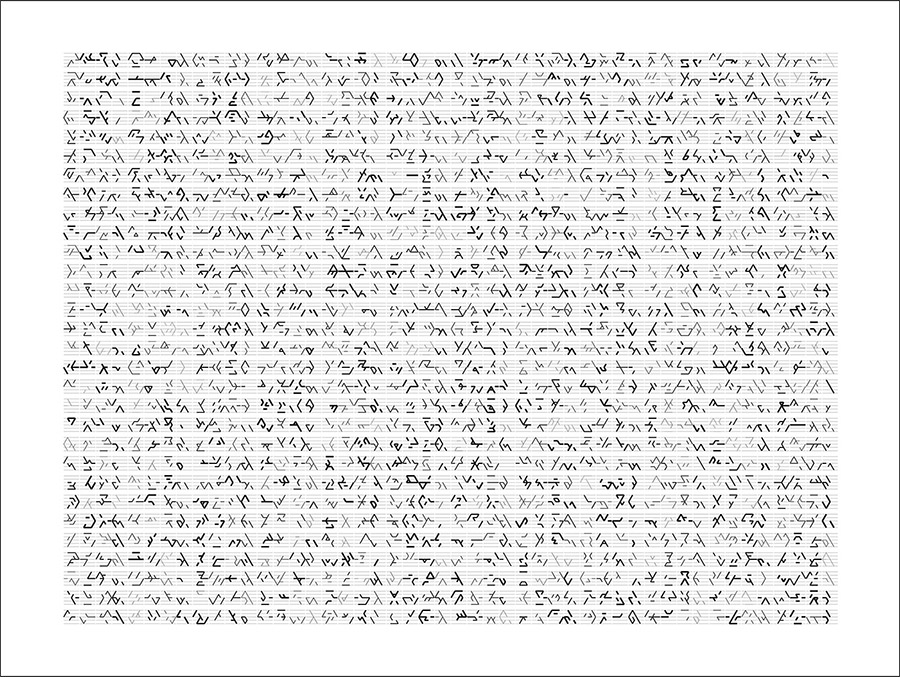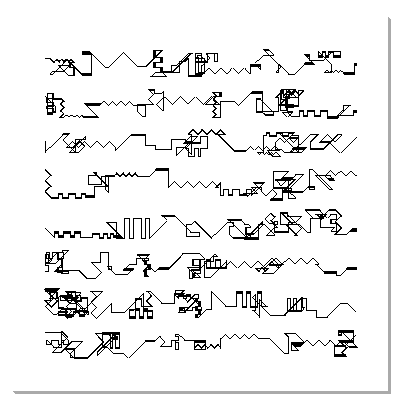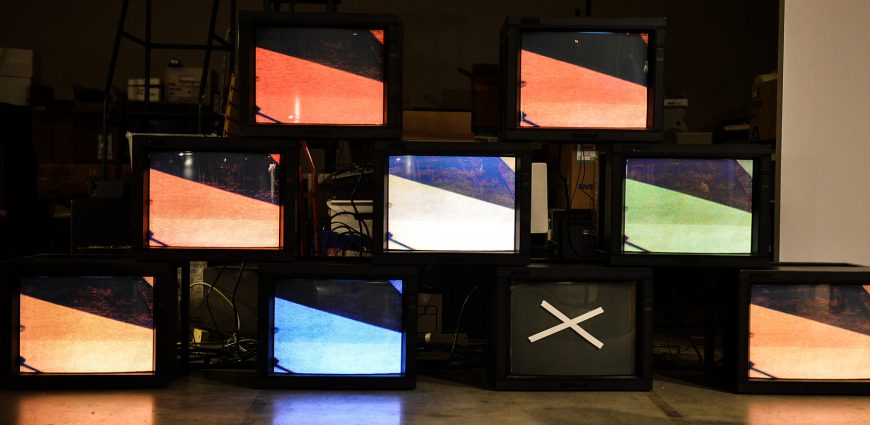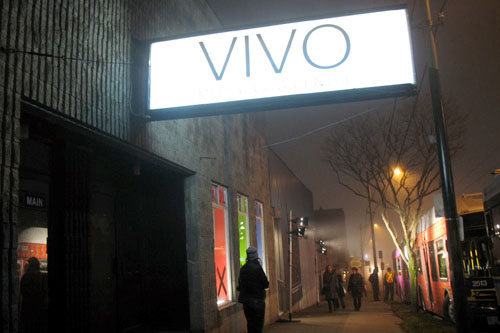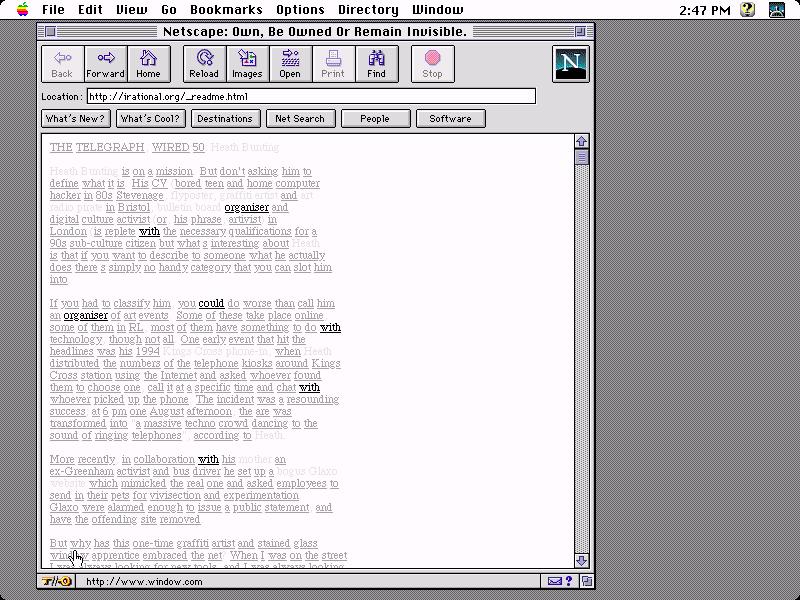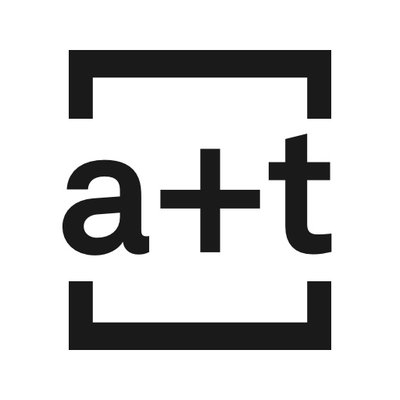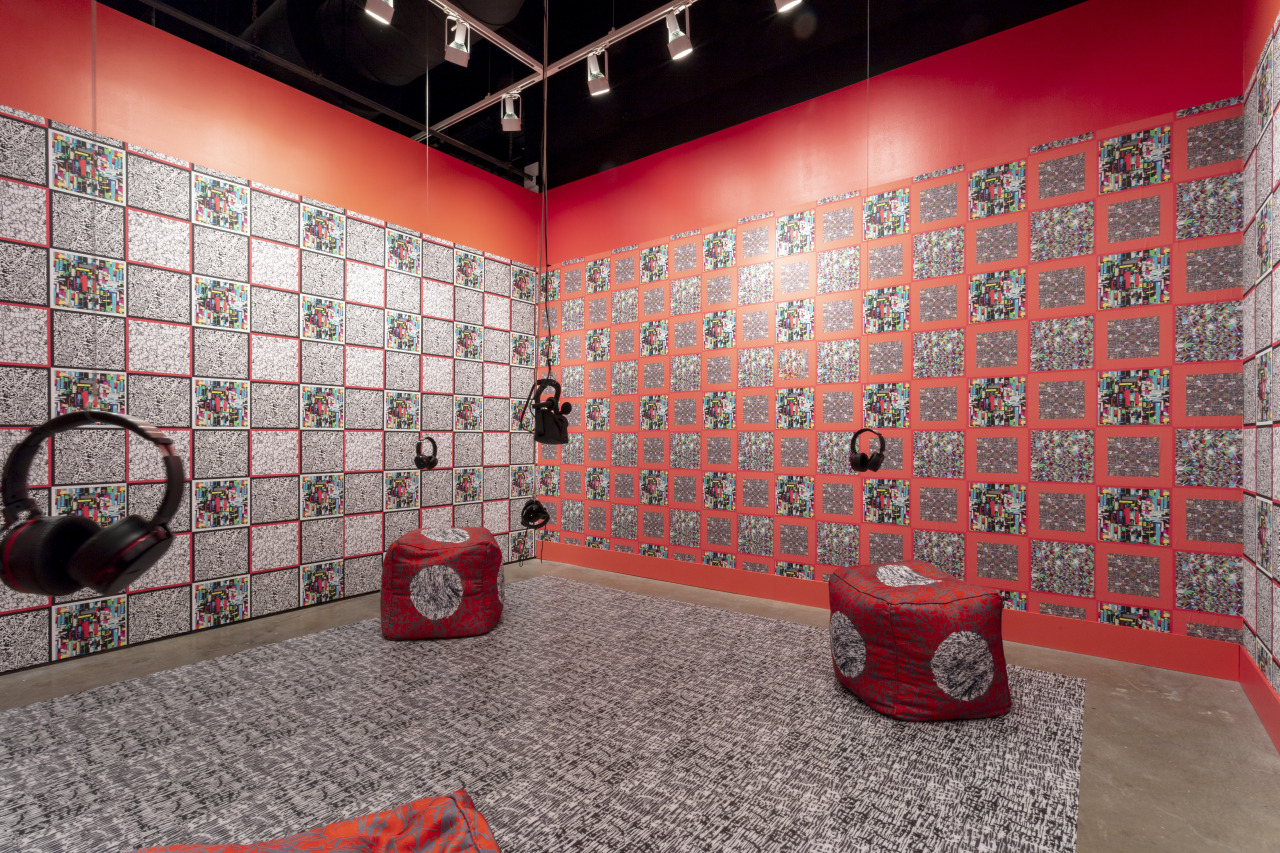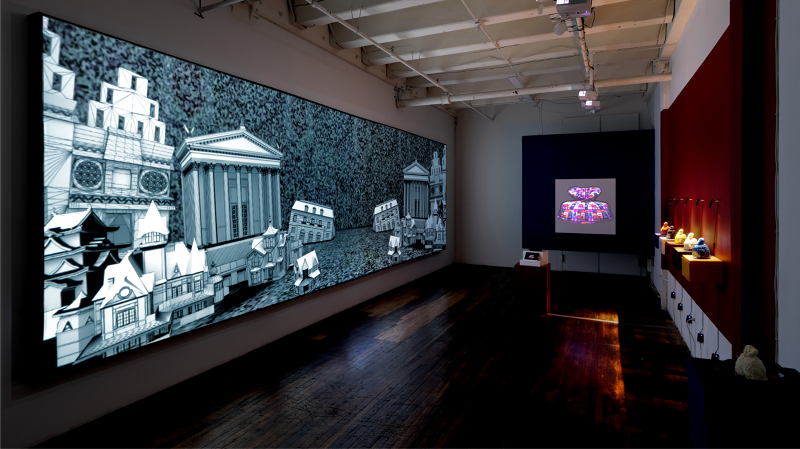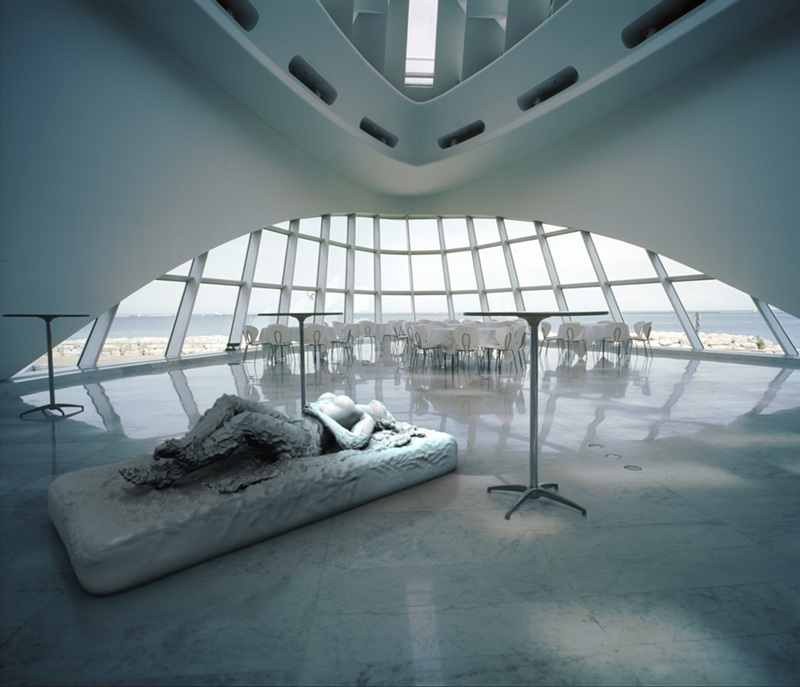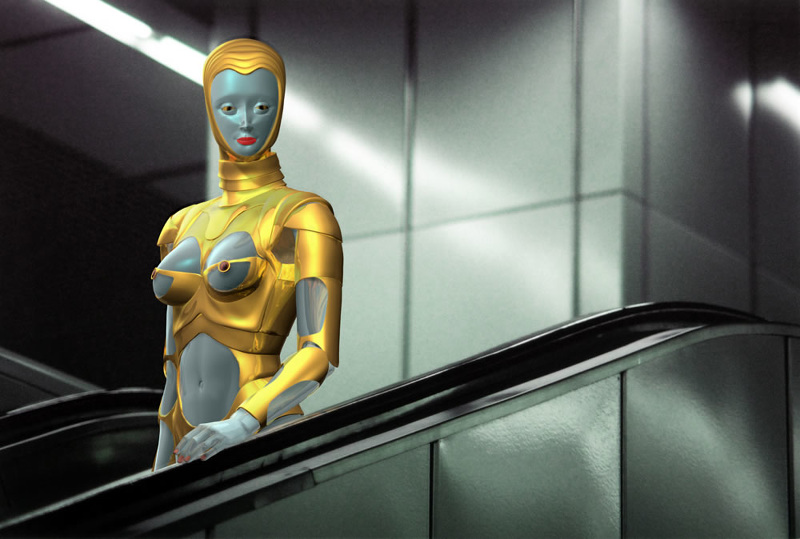Founded in 1971, Trinity Square Video is one of Canada’s first artist-run centres and its oldest media arts centre. We are a not-for-profit, charitable organization.[1]
For 50 years, Trinity Square has been a champion of media arts practices. Our activities are guided by a goal to increase our members’ and audiences’ understanding and imagination of what media arts practices can be. Trinity Square strives to create supportive environments, encouraging artistic and curatorial experimentation that challenge medium specificity through education, production and presentation supports.[1]
As video-based practices have become increasingly present across disciplines, Trinity Square engages artists and curators in critical investigations into the changing conditions of perception, materiality and the virtual. We consider all of our artistic activities and structures through a process of critical self-reflection, continuously evaluating the ethical positioning of our programming, jury structures, inter-organizational relationships, et cetera. In addition to holding aesthetic worth in its own right, our artistic programming extends our education and production activities in order to generate new knowledges.[1]
Trinity Square’s programming is guided by three priorities: 1) promoting an expanded definition of media arts; 2) promoting the meaningful engagement of diverse voices in all levels of our operations; and 3) supporting and nurturing the production of new works by artists and curators. Our membership represents the diversity of the city and honours the original mandate of the organization—seeking to reduce barriers to access related to race, gender, sexual orientation, and socio- economic and physical ability. [1]

